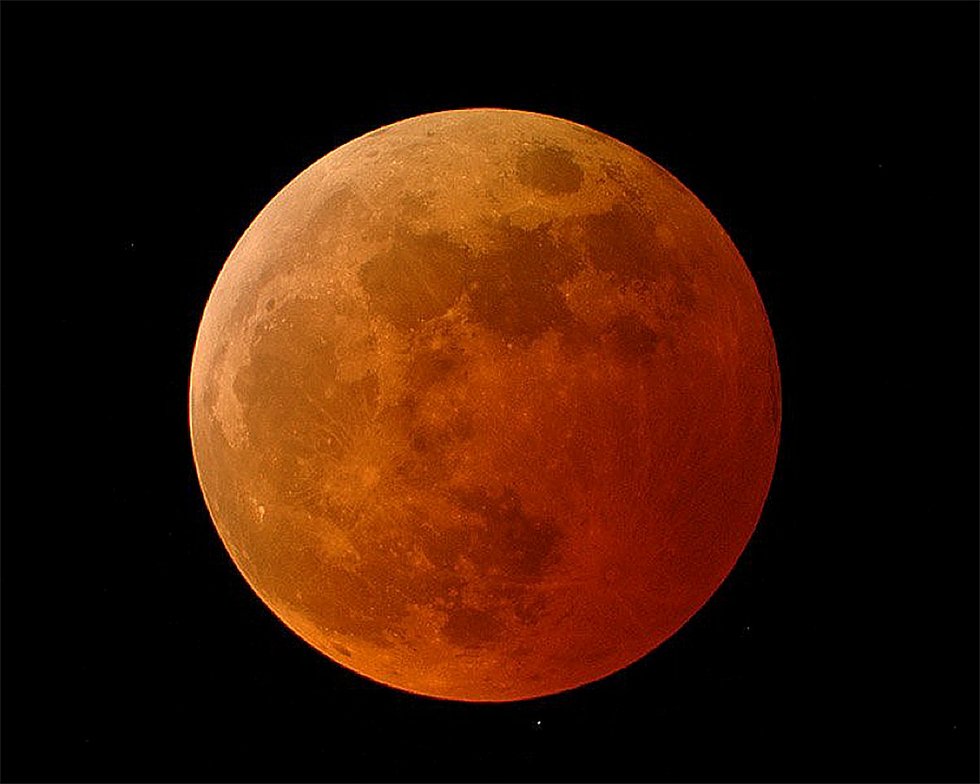
NASA
As the second one this month, the full moon this week is popularly known as a Blue Moon—but this one will turn red, literally, as it passes through Earth’s shadow to give us a total lunar eclipse.
Make a point of getting outside before dawn on Wednesday, Jan. 31 and looking to the west for this event.
It starts around 5:00 am when Earth’s outer shadow starts touching the moon. At 5:48 am the partial eclipse begins; the moon turns a reddish hue as Earth’s deep shadow moves across its face.
But dang! As of Tuesday afternoon, the weather forecast in Central Wisconsin calls for cloudy skies and possible snow showers Wednesday morning before dawn, during the eclipse. Take a peek anyway, because we still might make out the moon through the clouds. If not, you can always catch NASA’s live stream of the event here: moon.nasa.gov
By 6:20 am, about half the moon is covered. Stars fade as dawn breaks. The moon hangs over the horizon.
Totality (as seen in Central Wisconsin) begins at 6:52 am, when the moon turns completely red and sits on the horizon.
The moon sets at 7:22 am, while still partially eclipsed.
A lunar eclipse occurs only on a full moon, when the moon lines up with the Earth and the sun (that is, on the exact opposite side of Earth as the sun). An eclipse doesn’t happen at every full moon because the moon’s orbital plane is tipped from the Earth-sun plane, but occasionally intersects it.
A total lunar eclipse is often called a Blood Moon because the moon usually turns a deep coppery red from indirect sunlight that has passed through and is filtered by Earth’s atmosphere.
This Blood Moon will appear larger than usual. This happens to be a supermoon, meaning a full moon that coincides when the moon’s orbit brings it exceptionally close to Earth.

If you’re out to catch the eclipse starting while the sky is dark (before 6:15 am), you’ll notice some bright stars around the moon. The two on its right are the famous twin stars Castor and Pollux, of the constellation Gemini. To the upper left is bright Regulus, in the constellation Leo. If you’re in a dark location, you might make out the backward question mark, or sickle, that forms the lion’s head.
Face south to see bright Jupiter. To its immediate lower left is Mars, and then the bright red star Antares, the heart of Scorpius the Scorpion. Happy viewing.




